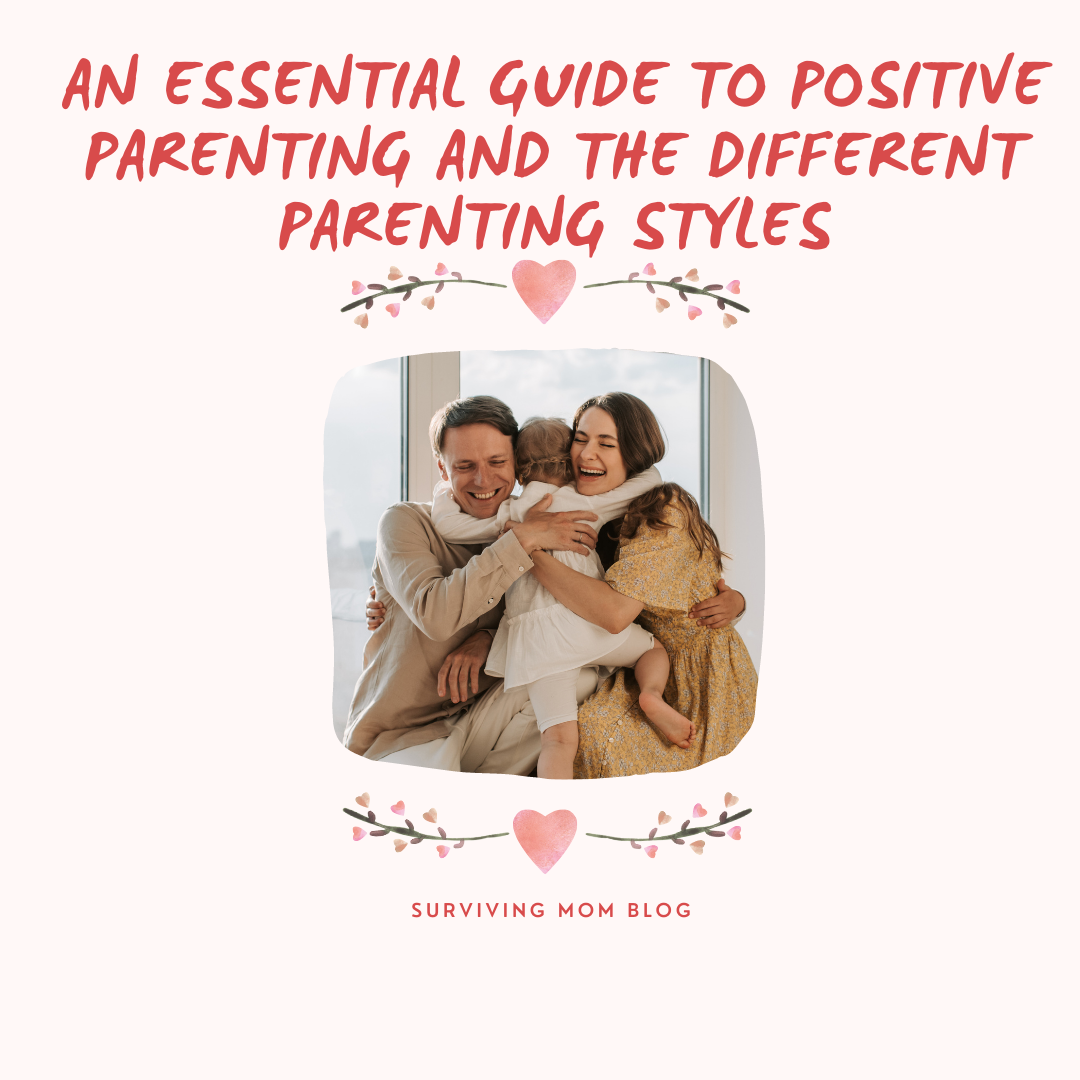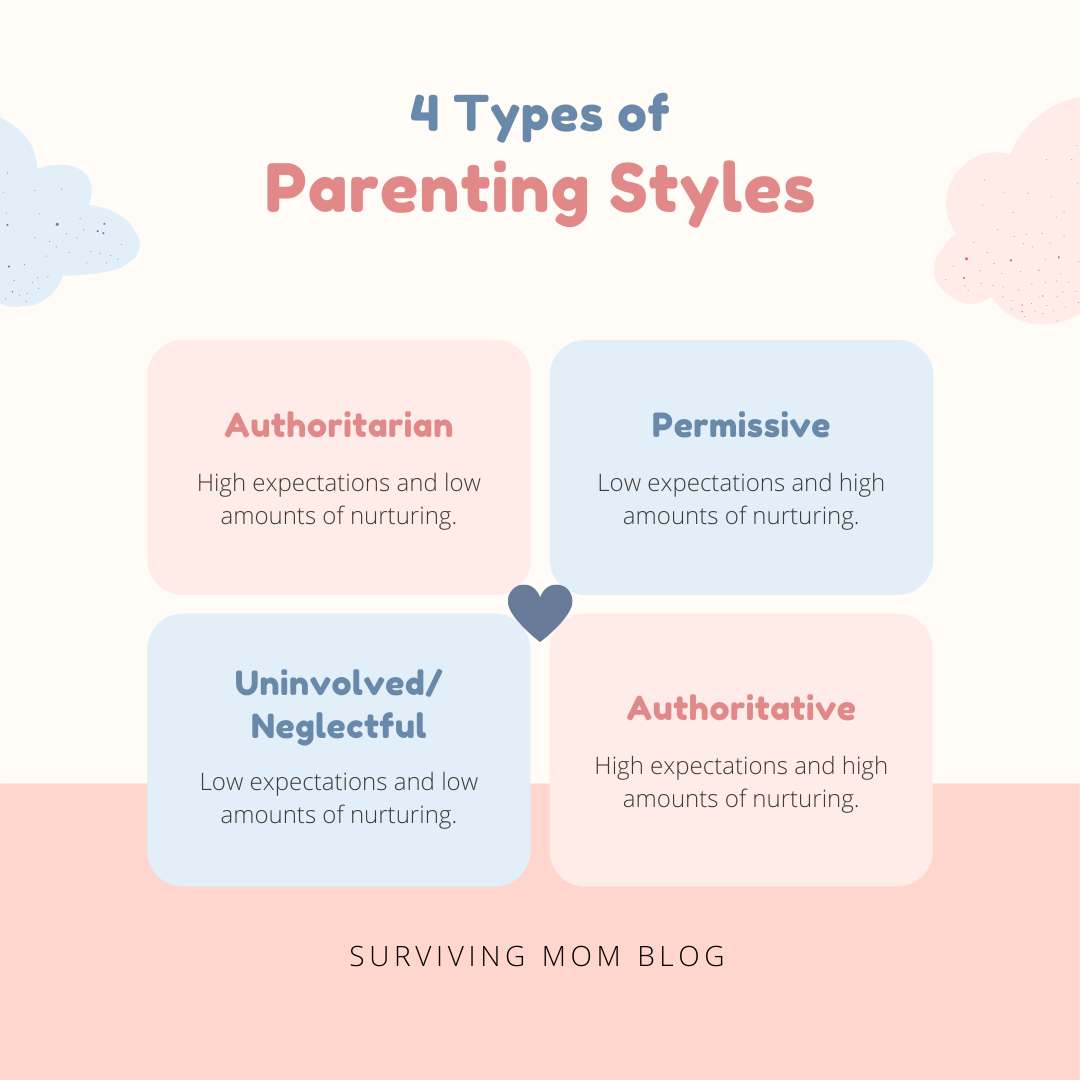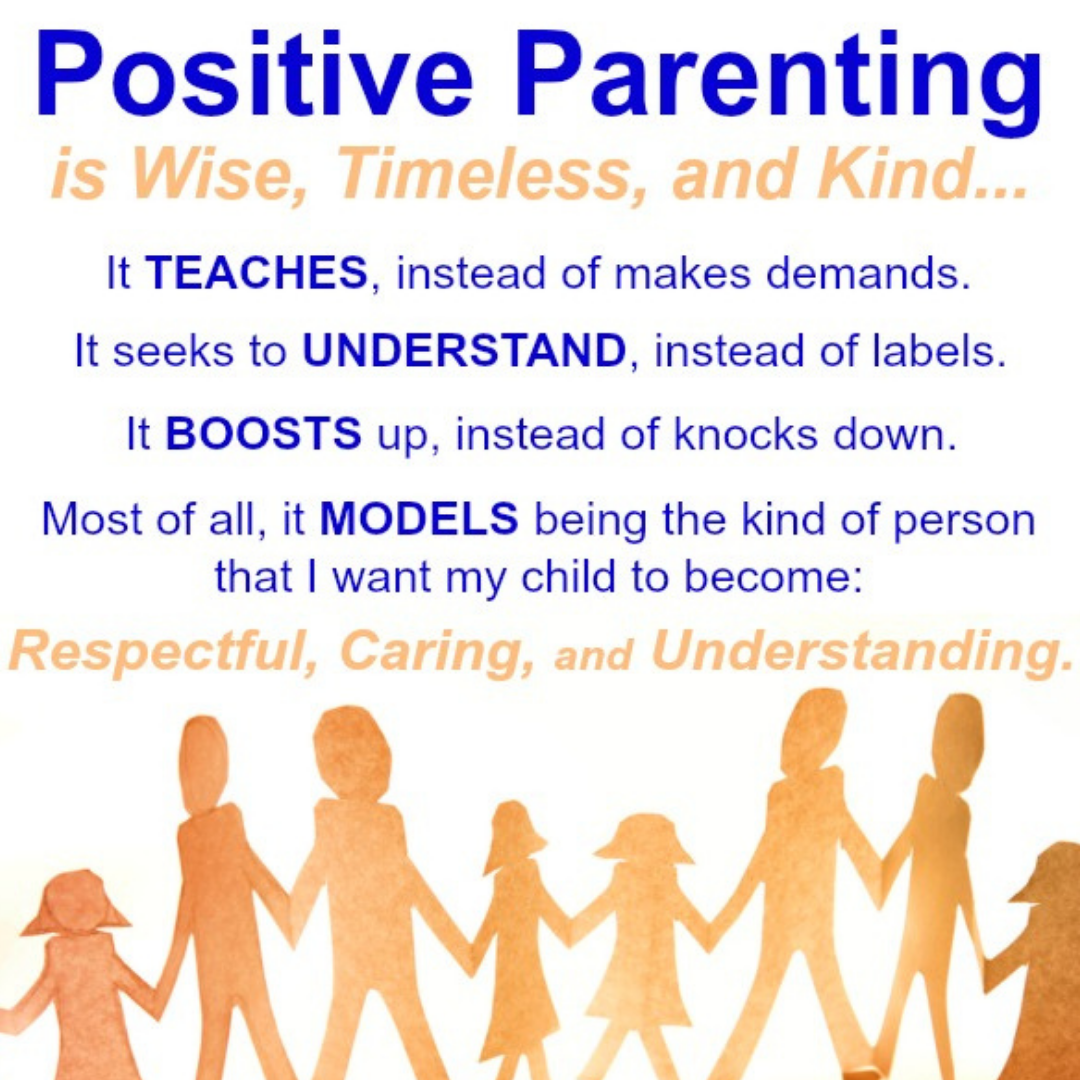
I vividly remember how I felt when I first saw my daughter. The love I felt for her was all-consuming. I knew I wanted to be a good mom, but I wasn’t sure how I was going to go about doing that. Every child is different, and therefore each child needs to be parented differently. This post will explain the different parenting styles and provide a guide to positive parenting.
The Four Types of Parenting Styles

In 1966 the developmental psychologist Diana Baumrind came up with four types of parenting styles. These styles explain how a parent interacts and disciplines their child. It is important to keep in mind that parenting is never clear cut. Elements form multiple styles of parenting may be used, or different styles might be used as different times throughout a child’s life (verywellmind.com, 2020).
1- Authoritarian parenting
There are high expectations and low amounts of nurturing with this parenting type. Parents use their authority to set rules and expectations, and do not allow questions or input from their children about these rules. As a result, the communication is usually from parent to child. They expect obedience and typically use yelling, spanking, and shaming to discipline their children. Punishments are used to deal with negative or unwanted behavior.
2-Permissive Parenting
This parenting style is the opposite of authoritarian parenting. There are low expectations and high amounts of nurturing. The relationship between parent and child more resembles a friendship than a parent and child relationship. Children are given complete freedom to make their own choices as there are no limits or boundaries. Parents give love and affection and communicate with their children, but there is a lack of guidance or rules.
3- Uninvolved/Neglectful Parenting
Low expectations and low nurturing characterize this type of parenting style. There is limited communication and parents are uninvolved in the child’s development and choices. Parents primarily ignore the child’s behavior and use no means of discipline.
4- Authoritative Parenting
There are high expectations and high levels of nurturing. Parents have open communication with their children and encourage verbal discourse. There are clear rules and expectations, and children’s feelings and well-being are prioritized. Parents provide a warm, loving environment. Discipline is provided, while explaining the importance of rules and their consequences.
GUIDE TO Positive Parenting
Positive parenting falls under the umbrella of authoritative parenting. The goal of positive parenting is to teach appropriate behavior rather than focus on negative behavior. The priority is placed on open communication so that children develop a good internal moral compass. As opposed to blindly following rules, kids are encouraged to understand the reasons behind these rules.
Advantages of Positive Parenting
(Parentingforbrain.com, 2021)
- Kids are more confident
- Children have more mental health and wellness
- Kids are more self-sufficient
- Children have better problem solving skills
- Kids develop healthy coping mechanisms
- Kids are more well-adjusted
- Children have more morals and values
- Kids have less behavioral issues
- Kids are more resilient
- Children have more academic success
- Kids have better social skills
- Kids are able to emotionally regulate and have self-awareness

guidelines FOR POSITIVE PARENTING
Look at the cause of the behavior
(positiveparentingsolutions.com, 2019)
When a child is acting out, there is often a reason behind it. Positive parenting stresses getting to the root of the behavior and having empathy in the process. For example, the next time your child is misbehaving, ask yourself what the cause could be. Did your child miss her nap? Is he hungry? Did something happen at school, with a friend, etc.?
There are other possible causes for misbehavior. A child needs to feel that he/she is getting attention/quality time with their parents and that he/she is encouraged to make choices. Power struggles often ensue when a child is not given the opportunity to assert independence.
Speak respectfully and firmly to your children
Positive parenting stresses that respect should be given to both the parent and the child. Using words such as “please” and “thank you” set a good example for how your child should speak to you and to others, while also giving them respect. Although parents who use this type of parenting speak in a kind way, that does not mean that they are not setting rules or boundaries.
speak firmly without yelling.
Yelling is something many of us do as we were yelled at as kids. There are going to be times we lose our cool and yell. However, the situation will usually then escalate or the child will reacts out of fear rather than learning a lesson from the situation. When possible, try speaking in a calm, but firm voice.
There are two things to keep in mind when speaking with your children:
- Positive language– Instead of telling your kids what NOT to do, try stating what they should do. For example, instead of saying, “Don’t run,” try saying, “Please walk.” Instead of saying, “Don’t throw your shoes,” say, “Please put your shoes in the shoe rack.” Explain what to do as a positive statement instead of a negative one.
- Positive Reinforcement– Just as positive language should be used, it is important to acknowledge positive behavior and reinforce it. Often we see our kids behaving in ways that we like, but we tend to mention the unwanted behaviors instead of all the ways that they behaved appropriately. Some examples of positive reinforcement are: “You’re working so hard on solving that math problem!”, “You were so helpful when you loaded the dishwasher!” “I saw that you were about to jump from that step, but you stopped. You should be really proud of yourself!” Try being as specific as possible by avoiding generic statements such as “Great job!” or “That’s wonderful!” Commenting on a child’s specific positive behavior shows that you noticed what they did and illustrates the exact behaviors that should continue.
There are two Types of consequences in positive parenting
(mother.ly.com, 2020)
- Natural Consequences– If a child is rough with a fragile toy, it will break. If a child does not put on warm shoes when it is cold outside, their feet will get cold. When homework is handed in that is incomplete or done incorrectly, the child will get a bad grade. Through natural consequences a child can learn how to make better choices. We can explain to our children why we think there is a better option, but there are times when we should allow our children to learn from their mistakes. This avoids you having to battle with your child, and your child is given the opportunity to figure things out for themselves.
- Logical Consequences-. When a consequence is given, it needs to be logical. Consequences should be given in advance as much as possible so that a child understands the outcome of their choice. It is okay to give a warning first, but there should also be a reminder of what will happen if it happens again. Some examples are: If your child leaves his toys on the floor when he is told to pick them up, those toys get taken away. If your child does not ask permission to turn on the TV, your child isn’t allowed to watch TV. There is no dessert if your child refuses to eat his food. If your child is not listening when having a playdate at a friend’s house, your child has to end the playdate.
Logical consequences should be respectful, reasonable, and related.
Speak respectfully when giving a consequence. There is no need to say, “I told you so,” or to make the child feel shame. Additionally, consequences need to make sense and be directly related to the action. Lastly, consequences should not be extreme, such as telling your child they have to go to bed early for a month for going to bed a few minutes passed their bedtime. If consequences are done in an unreasonable, disrespectful, or unrelated way, the child will not learn from their actions.
Expectations and rules need to be age and developmentally appropriate and clear
It is important to make sure that your child understand the rules of the house. Rules should be simple, with consequences stated ahead of time. For example, before going to the store, your child should know to stay next to you and that they are to keep their hands to themselves. Make sure that your expectations are clear and ask your child to repeat them back to you to ensure they understand.
It is important to keep the child’s age and development in mind when setting expectations. If you have a child with poor impulse control and hyperactivity, asking your child to stay next to you while you do a full grocery shopping is unrealistic. If your child will stand next to you while you pick up a few items, then state that as your expectation.
Explaining the expectations in advance allows kids to feel prepared and ensures that everyone is on the same page. This lessens the likelihood of outburst or negative behaviors.
Additionally, the amount of language you use should vary based on the child’s age and development. Try to keep your instructions to a couple of words with a young child. It is also helpful to get down to your child’s eye level when speaking with them.
It is a good idea to explain why you have these rules. For example, “I want you to keep your hands to yourself so nothing gets knocked off the shelves,” or, “Washing our hands before dinner helps us to stay healthy.” If your child understands the importance of these rules, they are more likely to comply.
Be consistent
Do not give a consequence unless you are willing to follow through with it. If there is a lack of follow through, it minimizes the importance of your rules and sends the message that you will continue to set consequences and not implement them. This will only increase the likelihood of unwanted behavior. You deserve to be respected and taken seriously, and therefore consistency is crucial.

Positive parenting is about helping children to figure out the appropriate way to behave. This type of parenting does not take place overnight, as both parents and children need to adjust. However, when working with our children, instead of combatting with them, we can build a stronger parent-child relationship. Positive parenting gives parents and kids the tools they need to flourish.
Disclaimer
This post may contain affiliate links. If you purchase a product via my link I may receive a small commission at no additional cost to you. Please visit our disclaimers here

Naomi P Lane says:
You hit on one thing that is definitely key: keep the messages brief when teaching something new. Children have short attention spans so too much verbalization gets lost, especially if you’re trying to correct their behaviour or they’re upset.
Sometimes that teachable moment has to wait until they are calm. We have all had to remove our upset child from a situation sometimes because they are overstimulated.
Randi says:
As a Speech Language Pathologist, one of the most crucial things I learned is getting down to the child’s eye level and keeping explanations short and sweet. Like you said, too much verbalization will go over their head or they won’t be receptive to it.
An integral part of positive parenting is trying to understand the cause of a child’s misbehavior. That is always the priority over consequences.
My next post is about positive parenting strategies, and I will discuss the importance of waiting until they are calm- stay tuned! This is just a glimpse into positive parenting to give an overall understanding of what it is and to wet everyone’s appetite! 😉